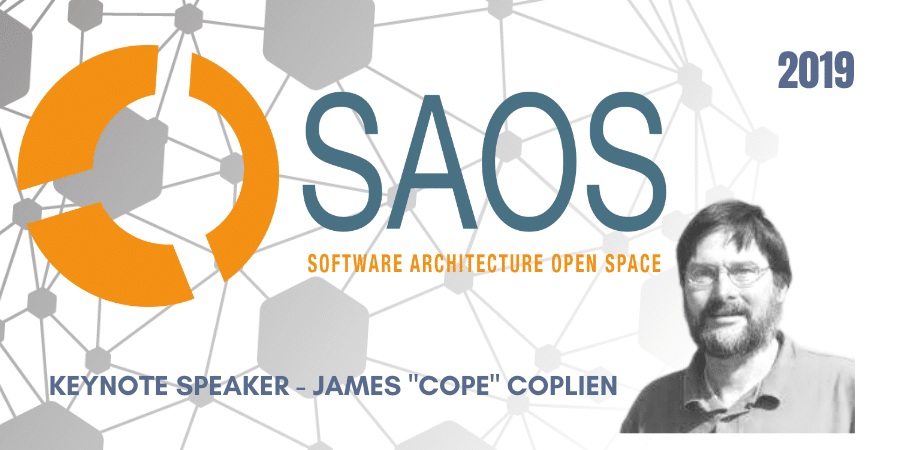Oplægget er optaget på Software Architecture Open Space 2019 d. 07/11-2019, på Glostrup Park Hotel.
Den 7. november 2019 slog vi dørene op for den 9. omgang SAOS. Sædvanen tro var det en dag med gode diskussioner, hvor deltagerne var med til at udforme dagens agenda. I år var James Coplien keynote speaker med titlen “The Architectural Voids of Change, The End User, and Deep Knowledge”.
The Architectural Voids of Change, The End User, and Deep Knowledge (English)
Reflecting back on more than 40 years of design from the perspective of contemporary design trends and fads, three paradoxes stand out:
Design is about managing change time, yet we seek stability in architecture.
Design is about the people who use the product, but many software architecture efforts focus on the people who build it.
Design comes out of understanding, yet most programmers leave analysis to someone else if it is done at all, and DDD marginalizes it.
The vast body of design literature outside software clearly sets out a challenge for us. Stewart Brandt’s How Buildings Learn challenges us to evolve architectures over centuries. Christopher Alexander admonishes us that people should design their own houses while architects serve largely as advisors on cultural norms and as technologists for fine-grain details. Alan Kay created object orientation as a way of reflecting end-user mental models, yet most contemporary architects are instead focused on coupling and cohesion or omit analysis entirely.
Design should lead to utility, durability, and delight, and software people at best make inroads into one of these three. In this talk I’ll remind us all that though we once borrowed the term architecture from the built world, we must continue to more broadly look beyond our own immature discipline for inspiration from the classics that continue to surprise us in how they validate changes in how we do software architecture — with hopes that the discussion will continue in Open Space.

